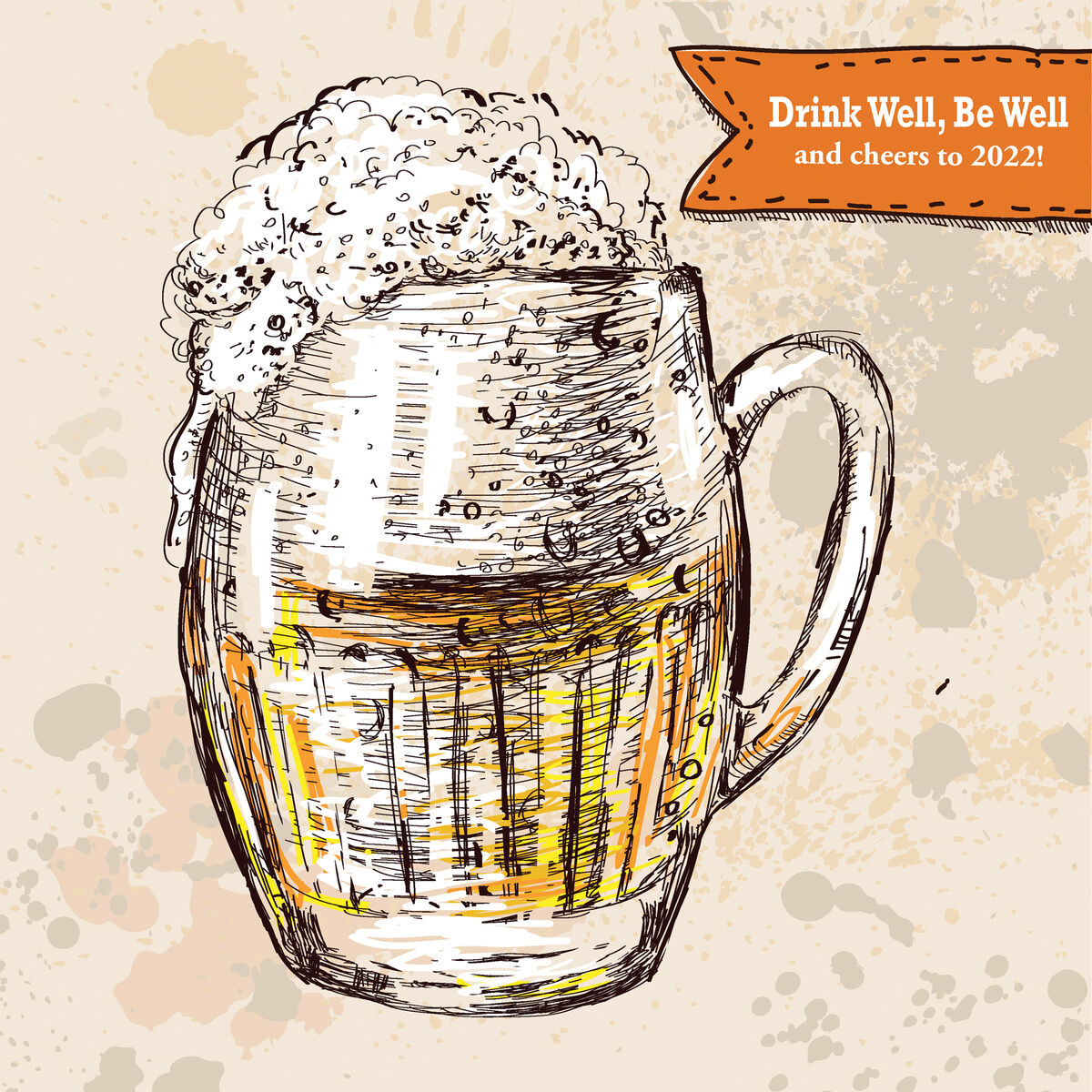Start 14-Day Trial Subscription
*No credit card required

2022 Consumer Trends
An exploration of IRI Worldwide sales data, which tracks some of the most popular beers by brewery and by sales category.
The Import of Imports
Readers may notice a theme throughout these pages of synthesis on scales from micro to macro and blending and diversification in the name of progression. Again, this has nothing to do with politics but rather the natural evolution of systems, whether cultural or material, abstract or organic.
Imports continue this theme, injecting elements simultaneously old and new into what otherwise might remain a closed system.
If domestic goods are the sun, Imports are the moon, subtly influencing the tides of commerce and waxing when the light wanes. Such is the theme of imported beer in 2021. It rallied as Craft and Domestic largely faltered.
Import Trends
The Import segment bucked the downward trend of Domestic and Craft, growing by 5 percent for dollar sales of $7.2 billion, accounting for about 21 percent of total beer sales.
Reasons that stand out in sharp relief are their insulation from certain U.S.-specific issues, such as material or labor shortages and governmental shutdowns. This factor will vary according to time and place, but the point is that these products are coming from elsewhere, and therefore are more likely to stand against the local tides.
Further, their markets are diversified, and often solidified, via cultural bounds beyond that of the typical American experience. Among the Top 100 brands, Corona sits at number five, selling $1.7 billion in the past year for a sales increase of 5 percent. Clearly, the public hasn’t lost its sense of taste for Mexican beer, no matter what it shares a name with.
Heineken is the tenth best-selling beer brand, seeing a 2 percent sales increase for a total of $692 million. Stella Artois rings in at number 13, though its sales dropped by about 4 percent, followed immediately by Dos Equis, which grew by half a percent to post $320 million in annual sales.
Corona Premier and Pacifico also sit in the top 40 brands and saw positive growth in 2021, at 2 and 7 percent, respectively. Further down the list, Modelo Chelada Especial grew by 9 percent for sales of nearly $100 million, and Modelo Negra grew by 8 percent to $71 million in sales. Take note, again, of the fact that Modelo’s Chelada outsold Modelo Negra. Further down the list, Modelo Chelada Limon Y Sal grew a powerful 43 percent for $54 million in sales, while Modelo Chelada Mango Y Chile grew an astounding 160 percent for $44 million in sales.
Bearing in mind that michelada recipes contain lime, we may have the accomplice to the downfall of beers with lime, along with the most underrated trend in craft beverage consumption.
Among the Import brands in the Top 100 faring relatively poorly, Fosters is down about 2 percent, putting it in danger of falling out of the list. Corona Light is still a big seller, but down 12 percent to around $170 million, and Tecate Light sales dropped 15 percent, putting it right ahead of Fosters in terms of sales. Corona Familiar is also down 14 percent. These drops among Mexican beers can be interpreted in relation to rises in competing styles – light, healthy seltzer and so on. In the case of Familiar, which is essentially a 32-ounce standard Corona (Familiar in the sense of “for the family”), it may be linked to less sharing of bottles, but more likely, marketing dollars simply were put towards other brands. Like nearly every major brand, Corona has its own seltzer brand with decent sales.

Social Trends Affecting the Beer Industry
Bearing in mind that beer is intrinsically tied to how we think and live, a few trends stand out that are worth considering.
The first is packaging. Environmentally responsible packaging is a marketing point in itself, and if done correctly, works as free PR while cutting costs. No matter what side of the aisle you’re on, no one’s going to veto your brewery for investing in sustainable packaging, such as PakTech’s 100-percent recycled can handles. As added bonuses, they save space and weight. Enough said.
Second, and a little less obviously, is the impact of online delivery services on beer. Thanks to the at-home boost of COVID, more people than ever are turned on to delivery of groceries and restaurant meals. Online food delivery services are projected to account for 40 percent of all restaurant sales by 2025, with services such as Uber Eats, DoorDash and Grubhub leading the charge. Though not yet ubiquitous, society has seen a push towards at-home insularity, thanks to remote work and pandemic concerns, while the shift towards a gig economy pushes more and more laborers into their employ.
Combined with the omnipresence of Amazon and its Instacart success, we can expect these forces to shape the future of how we order and receive goods, including the legislation behind the sale and shipping of alcohol. Athletic Brewing Co. has anchored much of its sales online, and Drizly has continued developing its alcohol delivery model – all signs that this mode of purchasing will continue to grow.
Lastly, in keeping with the growth of tech and enviro-conscious business strategies, partnerships with nonprofits and social media “influencers” are two modes of marketing to consider. Often, nonprofits are social media influencers, which avoids having to align your brand with a walking Barbie or Ken doll. For better and for worse, this sort of positioning has proven to make or break brands in a world where the persona you adopt dictates your ability to function in society.
Aligning with authentic people and organizations – or even simply starting your own charitable cause, will ensure you stay true to yourself and your mission while checking the necessary social boxes. Or take the opposite approach and put up a big middle finger to the world – it’s a risk, but it works for some (Arrogant Bastard, anyone?).
Future Trend Forecast
Aside from the steady draw of Imports, and the stunning rise of michelada products, the foremost trends are premiumization, non-alcoholic beverages and seltzers. If we step back, there is a correlation – each of these touches on an aspect of more mindful drinking.
Premiumization emphasizes quality over quantity, prioritizing sensory appreciation over mechanical intoxication. Buyers are willing to spend more for less, given that the end result is titillating. One of Drizly’s recent top sellers was The Boston Beer Co.’s Samuel Adams Utopias, which retails for $300 plus $20 for shipping. That’s one 24-ounce bottle. For those curious, that’s $12.50 an ounce.
Non-alcoholic beverages, obviously, are not being imbibed for the sake of intoxication. Quite the opposite – they provide the sensory appeal of beer without the deleterious physical effects. NA beers are an alternative social lubricant, allowing drinkers to participate in the ritual act of drinking and to sidestep potential social pressure from within or without.
Seltzers, though undoubtedly slugged and chugged without a second thought in dorms from Anacortes to St. Augustine, do offer a lower-calorie alternative, and allow non-beer drinkers to engage in social environments they might otherwise avoid. Further, their ingredients and alcohol content are typically more standardized, allowing novice drinkers to better gauge their intake. On top of that, they’re also gluten-free.
We are living in a time of change, and the sense is one of acceleration and increase in sensory input. There is more light, more noise and there are more things to worry about than ever before.
The natural response to an increase in stimuli is to become more selective. We have a universe of information at our fingertips, and with that power comes the responsibility of vetting what we let through the gates of our senses. Low-quality food and drink have a direct impact on how we live, and once aware of this fact, there’s no going back.
Such is the case with our drinking habits. We have more choice than ever before. We can and should be more selective with what we imbibe and how we do so. This process of discernment reflects a natural evolution from the gross to the refined. Most drinkers begin with light beers and cheap liquor, and over time learn that there are more sensible, rewarding ways of engaging with alcohol. As a society, this is the change we are going through.
Over time, flash and brawn will give way to refinement and subtlety, and these qualities will become embedded in our culture. European drinking habits reflect this evolution, if for no other reason than they have had a multi-century head start.
However, our selectivity must not give way to closed-mindedness, which brings us full circle to what may be the ultimate takeaway for 2022. Brewers and drinkers alike stand to gain by expanding their horizons and opening their doors to new demographics, be it women, through incorporation of seltzers and beer-adjacent drinks, or ethnic groups, who, if welcomed more into the fold of craft, will bring the inspiration – and spending power – that craft needs to continue thriving.
The word “connoisseur” has its roots in “to know” and “to recognize.” As we come to know the world of beer more intimately, we can relate that journey of knowledge back to the world at large and recognize that elements of refined drinking – mindfulness, fellowship and discernment, can be applied to the rest of life as well.



